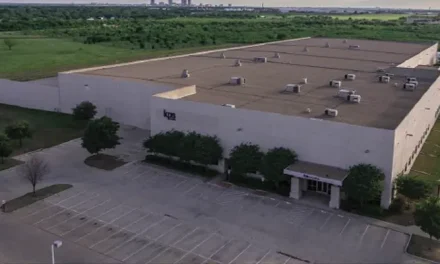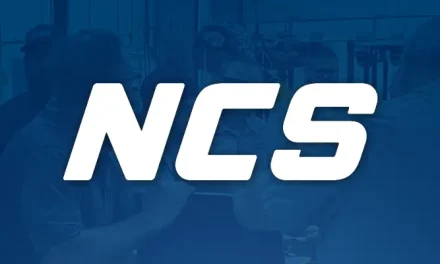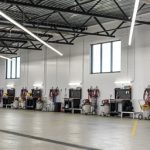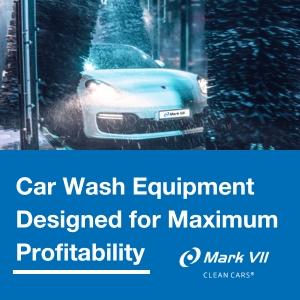
Forecourt – Achieving Uniformity in the Performance of Dispenser and Tank Sumps

By Ed Kammerer
When you think about it, there’s something comforting and calming about the consistency of things that are uniform. The most obvious use of the word concerns the togs that sports teams wear. Love ‘em or hate ‘em, there is something reassuring about the New York Yankees’ pinstriped home uniforms, the look of which hasn’t been modified in any meaningful way since the days when Babe Ruth was circling the bases 100 years ago after hitting another home run.
The soothing effects of uniformity – whether observed consciously or subconsciously – dot our daily lives in many ways. The sun always rises in the east. When we order our daily latte at the corner coffee shop, we expect – and are pleased – when it tastes the same as one that was purchased the previous day. When we hit that enter or return button on our computers or smartphones, we take for granted that the web page will load in milliseconds; any deviation from that uniform norm, by even just a second or two, knocks us off our game.
Which brings us to the opposite of uniformity, as embodied by the word nonconformity, which is the “lack of similarity or consistency in form or type.” And, since I am writing in a publication that caters to the retail-fueling industry, you may have guessed that I am referring to the processes that are used to manufacture a fueling-system’s dispenser and tank sumps. OK, maybe that wasn’t the first thing that popped into your head, but it is a topic that should be of interest to fuel retailers, and one that has received some additional notoriety in recent years.
For many decades, traditional dispenser and tank sumps were manufactured of fiber-reinforced plastic (FRP) through a process that required the use of a spray-up or chopper gun that shot strands of glass mixed with resin onto a one-sided mold where it was hand rolled into the sump’s hoped-for final shape. The process, while widely accepted as the best and most efficient way to build sumps at the time, was time-consuming, labour intensive and generated by-product plastic resin and glass particles that required bulky safety equipment for the worker and extensive and expensive ventilation equipment for the facility in order to mitigate hazards and meet strict regulatory requirements related to the manufacturing of fiberglass products. And, in the end, achieving uniformity in size, wall thickness, glass-resin ratio, etc., for every sump was difficult, mainly because much of that depended on the experience, efficacy and attention to detail of the person wielding the chopper gun.
So, while there’s no question that chopper-gun-based sump manufacturing was a stalwart for many years, there were attempts made to invent a better process. Those attempts have come to fruition with the introduction of the innovative advanced composite technology fiberglass-manufacturing process referred to as Sheet-Molded Compound (SMC). This technology takes a sheet of composite or fiberglass molding compound and utilizes an industrial press to stamp out or form the part. The ultimate benefit of the SMC process is that it repeatedly produces a uniform part every time with consistent wall thicknesses and glass/resin ratios. The stamping process is also quick, easy and requires very little manual labour. Additionally, because the process does not involve a chopper gun or the spraying of fiberglass materials, there are no fugitive by-product resin fumes or glass particles, making the process clean, quick and efficient.
A Uniformly Acceptable Solution
Recognizing the shortcomings of traditional fiberglass-manufacturing processes and acknowledging the benefits of SMC, OPW Retail Fueling, Smithfield, NC, has created a new line of dispenser and tank sumps – dubbed The No-Brainer Secondary Containers – that are manufactured with the SMC process. Christened the E-Series, this new sump family consists of two models:
- DSE Dispenser Sump: Uses the SMC process to create a dispenser sump that combines superior design, premium materials and world-class manufacturing expertise. The DSE is the only fiberglass dispenser sump with smooth and uniform walls on the inside and outside, which helps the sides bond better, resulting in an enhanced leak-resistant sealing surface for all types of entry fittings. The sump base has also been designed to create strong bonds with fiberglass and flexible-pipe fittings, which also reduces leak risks. Finally, the DSE sump can be easily retrofitted into the fueling system’s existing containment system.
- TSE Tank Sump: The TSE also uses the SMC manufacturing process that produces uniformly thick and smooth walls, inside and out, to provide a watertight seal that bonds better to prevent leaks and minimize maintenance. TSE sumps are available in collar-ring and solid-bottom mounting designs and with a compression-style cover or ergonomic “L-Handle” options. The TSE sump is also able to be retrofitted into the fueling site’s current secondary-containment system.
An added benefit to the uniformity that the SMC manufacturing process affords is found in the fact that while some models of non-uniform dispenser and tank sumps are bulky and hard to store, the DSE and TSE models feature a universal base that is designed to nest perfectly inside itself, along with feet and specialized grooves that make it easy to unstack. This helps reduce and optimize the space needed for inventory storage.
Finally, the SMC-manufacturing process is cost-effective, giving the purchasers of the DSE and TSE sumps a premium product at a value price, while the efficiency of the SMC process enables OPW to offer the fastest delivery lead times in the industry.
Conclusion
It is uniformly accepted that uniformity of outcome or result can be a major selling point for many products. It should be no different when retail-fuel-site operators are considering the dispenser and tank sumps that play such a pivotal role in the secondary-containment systems at their locations. While traditional fiberglass-manufacturing processes performed nobly for many years, the new Advanced Composite Technology known as Sheet-Molded Compound is setting a new standard in the construction of fiberglass-based products that achieve new levels of uniformity and OPW is defining what’s next in this realm with its new E-Series family of dispenser (DSE) and tank (TSE) sumps.
Ed Kammerer is the director of global product management for OPW, based in Cincinnati, OH, USA. He can be reached at ed.kammerer@opwglobal.com. For more information on OPW, go to opwglobal.com.



































